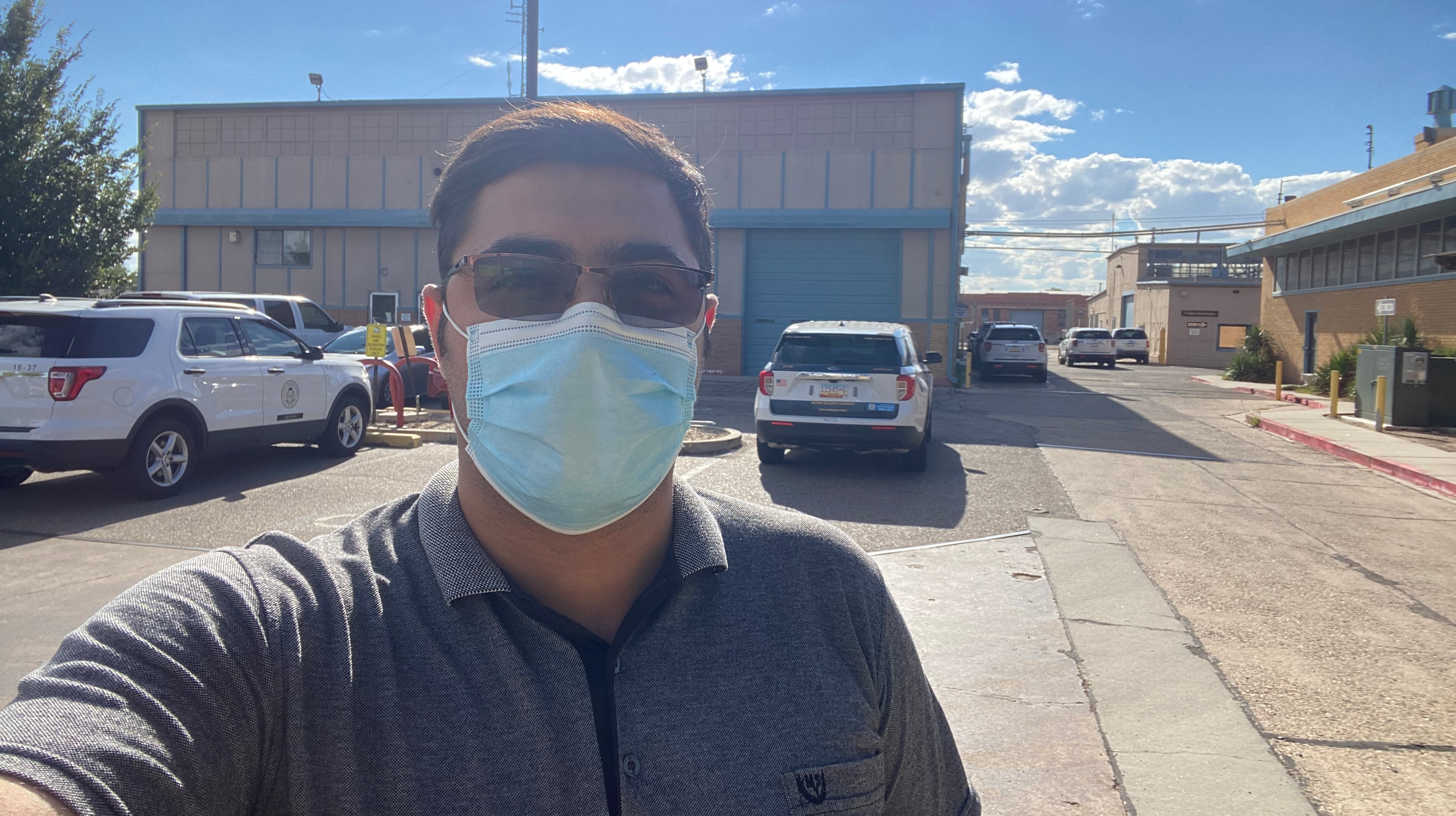NEWS
NM SMART Grid Center Externship

Tohid Khalili is a PhD candidate in Electrical and Computer Engineering at the University of New Mexico, and an exceptional example of success in higher education STEM. He participates in NM SMART Grid Center research under the direction of UNM faculty member Dr. Ali Bidram. In Summer 2021, he was supported as an extern with the City of Albuquerque. Externships are available to NM SMART Grid students (learn more).
I spent my time in the summer of 2021 doing research at the City of Albuquerque's Department of Municipal Development (DMD). I also cooperated with the Albuquerque Energy Council (AEC). My activities included conducting research in Albuquerque and interacting with the City of Albuquerque’s real-world projects. I was introduced to the administrative affairs of real-world projects and performed research utilizing the City of Albuquerque as a case study. I learned how they perform sustainability updates and how their project contracts work. I helped City of Albuquerque energy managers in their efforts to achieve higher energy efficiency and renewable goals in order to reduce utility costs and CO2 emissions. I performed smart city/smart grid research and proposed some new ways Albuquerque can become a 100% renewable city. Moreover, I was introduced to electric vehicle (EV) charging stations.
I proposed a microgrid design for the City of Albuquerque’s 911 center. This project provided a rough estimate for designing a microgrid for the City of Albuquerque’s buildings, and considered PV installation with and without the presence of batteries and 5 days’ worth of autonomy in battery calculations. In order to design this system, I considered the annual global irradiation, average temperature, annual estimated power consumption, and location (latitude and longitude) of Albuquerque. I also used specific PV model data, a specific number of modules to reach a total desired PV power, and a specific inclination and orientation of panels for the proposed system.
In this microgrid design, I included an inverter with a capacity that is 20%-30% higher than the demand of the system for safety reasons. Finally, my design included calculations for annual PV energy, consumption, grid feed-in, and yield. Additionally, I provided estimates of the CO2 emissions avoided by my design, necessary battery size and configurations, and an approximate budget.
All of these activities were in line with my current project with the NM SMART Grid Center NM EPSCoR award which is focused on optimizing the grid and having a smart and reliable system. I can use my unique experience of interacting with practical projects and ongoing projects of the City of Albuquerque in my current research. I am sure my externship at the City of Albuquerque improved my performance, knowledge, and experience in solving the optimization problems of my research supported by the NM EPSCoR program. I needed to be familiar with real-world test systems to be able to build realistic models for my papers to improve the reliability, resiliency, and robustness of the power system. This externship helped me to do so and is a research experience that can accelerate my papers’ progress.
Thanks for the generous support of NM EPSCoR which made it possible for me to gain this valuable experience. Special thanks to the City of Albuquerque, University of New Mexico, and my supervisors at both institutions.


